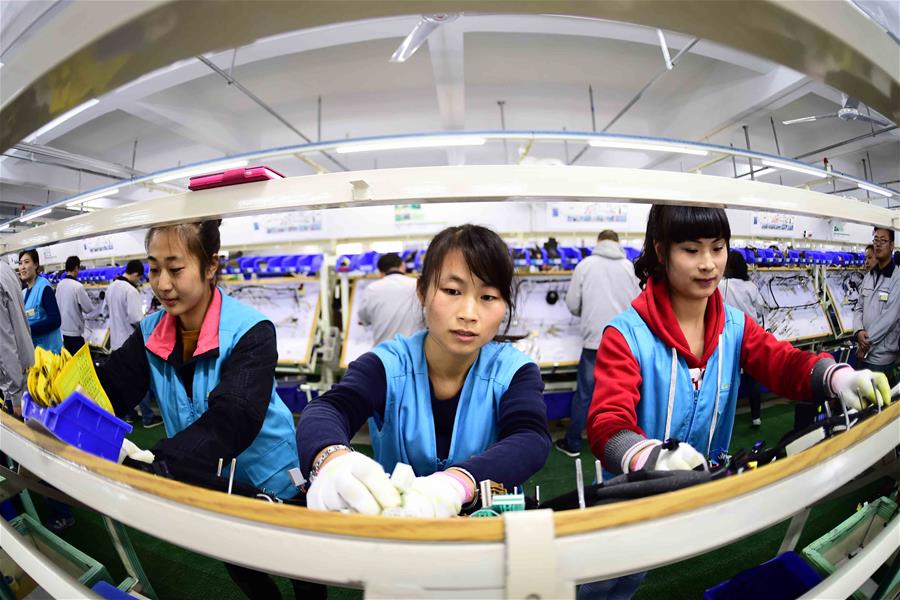Stable internal growth tops China’s economy in 2017

People work at a workshop in Rushan in eastern China’s Shandong Province. The Central Economic Work Conference concluded on Dec. 16 signals the nation’s strong emphasis on fostering the real economy.
The Central Economic Work Conference was concluded on Dec. 16 in Beijing. The tone-setting conference analyzed the current domestic and international economic situations, reviewed China’s economic progress in 2016 and made plans for economic strategy in 2017.
Wei Zhong, a research fellow from the Institute of Economics under the Chinese Academy of Social Sciences, said efforts to highlight the importance of preventing financial risk, curbing property bubbles and developing more fiscal budgets to secure livelihoods were mostly targeted at risk prevention.
The conference pointed out that the significant structural imbalance in the economy is a prominent contradiction, and that supply-side structural reform is of great importance to achieving a new dynamic balance in the supply-demand relationship.
In addition to continuing to promote the five major tasks of structural reform, which are cutting overcapacity, destocking, deleveraging, reducing costs and making up for deficiencies, China in 2017 will deepen its supply-side structural reform in agriculture, boost the real economy and promote the steady and healthy development of the property market, said Gong Min, deputy director of the Center for Macroeconomic Research at Xiamen University.
Encouraging innovation was one of the keys to deepening reform, Gong said. The conference stressed the development of the property protection system and acceleration of the compilation of the Civil Code, she said.
Wei noted that “introducing capital from the virtual economy to the real economy” was an important direction of many reform policies. Destocking was not just selling all the houses, but rather increasing the income of residents and promoting population urbanization through the development of the real economy and industrial upgrading, he said.
Gong said the prevention and control of financial risk aimed to create a stable financial environment for the real economy. And the statement that “houses are built for living, not for speculation,” which aimed to strictly control the loans and credit capital flowing toward speculative house purchasing, will cause capital to flow back into the real economy, she said.
The conference also emphasized a series of policies for improving people’s life including increasing peasants’ income, promoting targeted poverty-alleviation and further reforming the pension insurance system.
Wei said the pension insurance system in China should be reformed toward a more sustainable, fair and movable one. Problems relating to fairness were gradually improved with the merging of the urban pension system with the rural one, and the unifying of the pension system for enterprise employees with the one for the government and other institutions’ employees.
The sustainable preservation and appreciation of the value of the national pension funds also can be expected to be resolved due to the increasing possibility of allowing pension funds to be invested in the capital market, Wei said.
Pension insurance system reform in the future should improve the pension insurance to a nationally coordinated level, Wei said. This is fundamental for a national labor market where labor forces are able to move freely, he said, adding that it would more efficiently allocate labor resources.
Mao Li is a reporter at the Chinese Social Sciences Today.

 PRINT
PRINT CLOSE
CLOSE